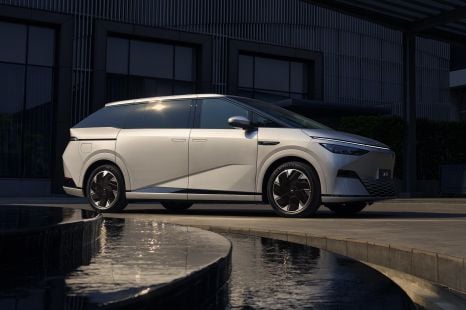

William Stopford
Will 2026 be the year of the people mover in Australia? China seems to think so
6 Hours Ago

Design Contributor
The Bugatti Centodieci is a limited production hypercar, premiered at the 2019 Pebble Beach Concours d’Elegance as an homage to the Bugatti EB110 (1991-1995) with a price tag of €8 million before taxes.
As Stephan Winkelmann, Bugatti president, stated during the official presentation, this car is a reference to the Italian era of Bugatti’s history in the Campogalliano factory where the EB110 was built.
Thus, Centodieci is the Italian word for 110, revealing the source of inspiration while celebrating the year of Bugatti’s 110th anniversary.
As a reminder, the EB110 was the brainchild of ex-Bugatti’s president, Romano Artioli, commemorating the 110th anniversary from Ettore Bugatti’s birth year.
The supercar was engineered by Paolo Stanzani (ex. Lamborghini) and Nicola Materazzi (ex. Lancia, Ferrari), and designed by Giampaolo Benedini based on preliminary work by Marcello Gandin.
During the 1990s, it was one of the coolest and fastest cars on the planet, thanks to the quad-turbo 3.5-litre V12 engine producing up to 450 kW, allowing a top speed of 355 km/h.
A total of 139 units of the EB110 were produced in the Campogalliano factory before Bugatti Automobili S.p.A. filed for bankruptcy in 1995.
As we know, the French carmaker would be successfully resurrected under the ownership of Volkswagen Group, thanks largely to Ferdinand Piëch’s determination.
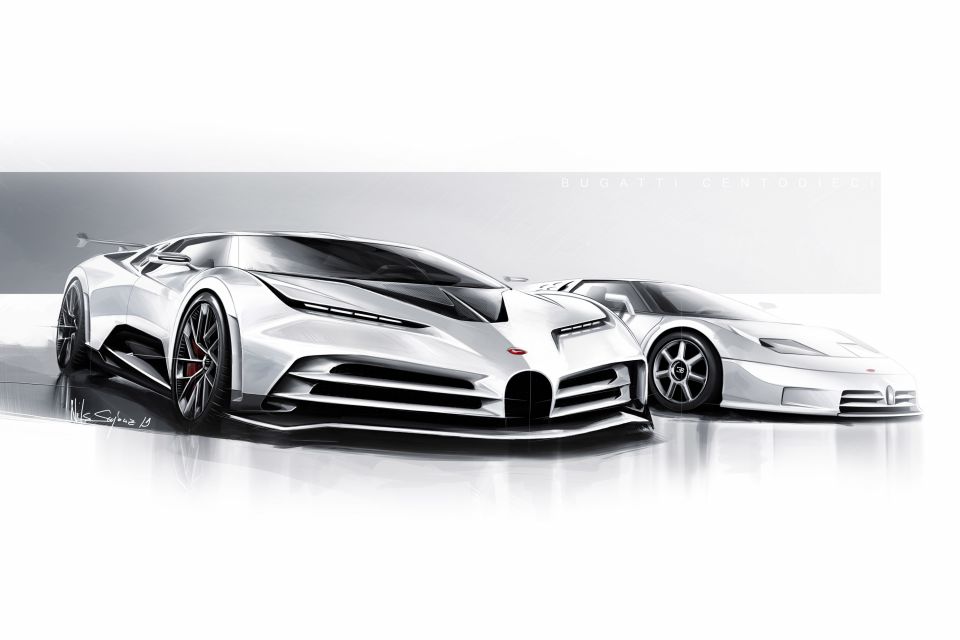
The Centodieci was another example of Bugatti’s return to coach building, revealed just months after the La Voiture Noire (2019) one-off.
Under the unique carbon fibre bodywork, we find the underpinnings of the Bugatti Chiron, with a carbon-fibre monocoque chassis and a tuned version of the mid-mounted 8.0-litre W16 engine producing 1176kW.
It is also is 20 kg lighter than the Chiron, offering a more dynamic driving experience and an improved power-to-weight ratio.
As for performance, it can accelerate from 0-100 km/h in 2.4 seconds, from 0-200 km/h in 6.1 seconds, and from 0-300 km/h in 13.1 seconds, while top speed is electronically limited to 380 km/h.
Design references to the EB110, and more specifically the lighter and more powerful Super Sport (SS) version unveiled in 1992, are evident all around the Centodieci’s unique bodywork.
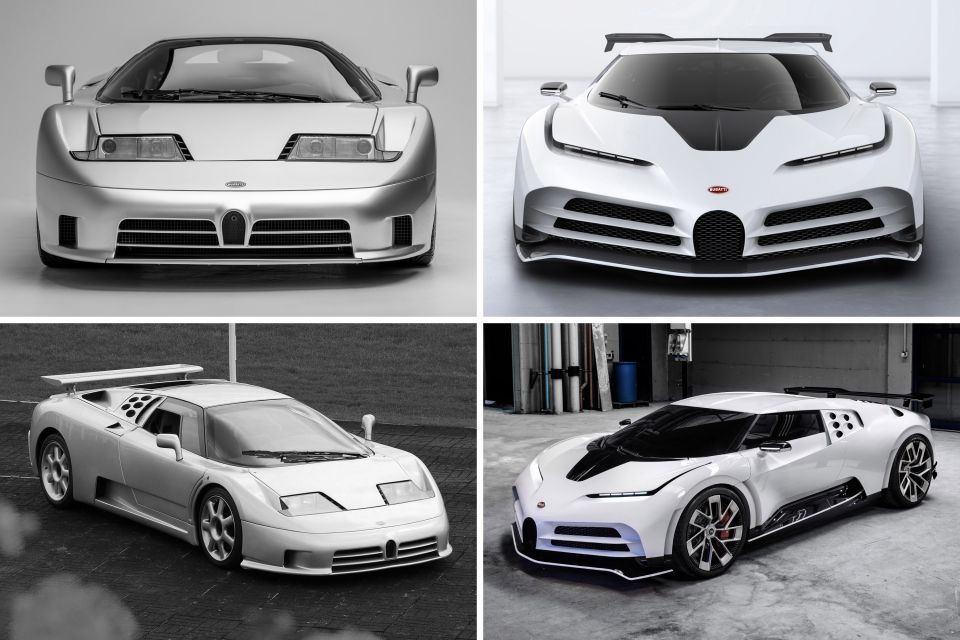
At the front, the horseshoe-shaped radiator grille in the Centodieci is smaller compared to the preceding Chiron (2016), Divo (2018) and La Voiture Noire (2019), creating a stronger resemblance to the EB110.
The grille sits on the prominent splitter and is surrounded by an three-section intakes framed by aerodynamic fins.
The most notable difference, however, is that the modern car adopts a 3D design approach in contrast with the “flat” face of its predecessor, in order to look more dynamic and muscular, while also performing better in terms of cooling and aerodynamics.
The horizontally arranged and close positioned headlights are a lot thinner – thanks to advanced LED technology – and more aggressively inclined.
Like in the EB110, they are connected with air vents that follow the lines of the wide front fenders, creating a gap between the side panels and the hood.
The air entering the grille escapes from the V-shaped hood opening divided by a central fin. Its black colour makes it look like a continuation of the windshield, which is unified with the side windows to create a wraparound cockpit.
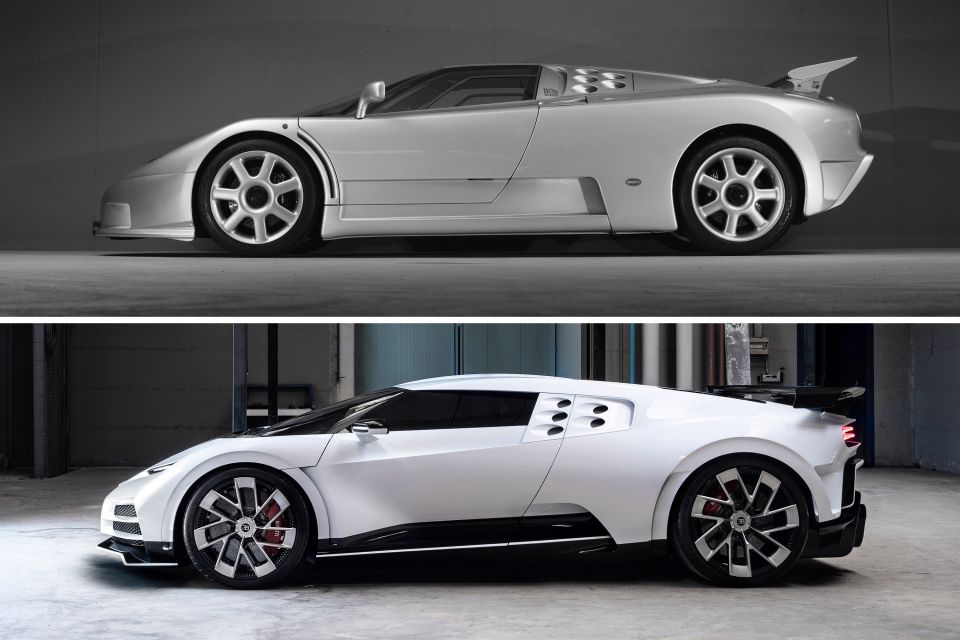
Moving over to the side, the wedge shape of the EB110 is retained, however, the flat surfaces of the side panels are replaced by a more sculpted bodywork with heavily pronounced wheel arches and larger air intakes.
The proportions emphasise the mid-engined layout, with an incline towards the front. The two-tone model-specific rims have seven spokes like in the original, but have grown in diameter (20-inch front, 21-inch rear instead of 18-inch all around), with large openings for weight-reduction and brake-cooling.
According to the chief designer, the most difficult challenge the team faced was the need to “combine the complex aero-thermal requirements of the underlying Chiron technology with a completely different aesthetic appearance”.
The five round inserts on the B-pillar are a clear nod to the signature element of the EB110 SS, but they’re also fully functional.
Together with three additional openings on the top and a larger lower intake enclosing the side sills, they bring enough air for the quad-turbo motor to breath. Another reference to the original are the vents following the shape of the wheel arches.
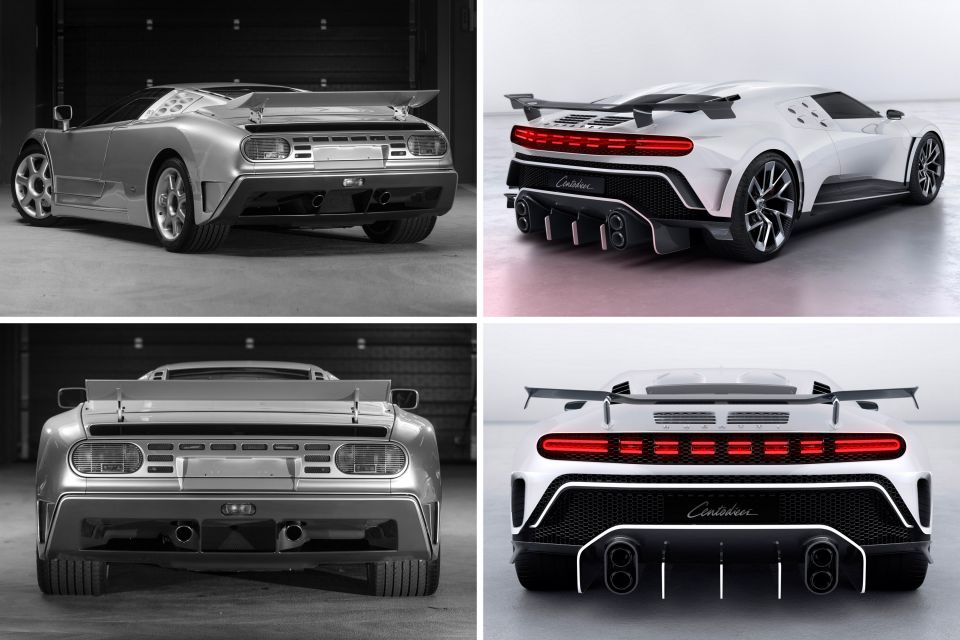
Equally important for engine cooling are the discreet NACA-style air ducts on the roof, and the large number of vents on both sides and below the engine’s transparent glass cover – a feature that was successfully retained after months of research.
Unlike other modern Bugatti vehicles, the Centodieci features a fixed rear wing (not an active unit) to improve downforce.
The 16-part LED taillights are housed in a single opening with rounded edges, bearing a close resemblance to the pill-shaped lights and small vents of the EB110.
Below, there is a huge opening enhancing the thermal management of the engine, and while a lot more dramatic it retains the general shape of the original.
There we find the equally-large rear diffuser with white highlights on the fins, and a black matte anodised finish for the quad exhaust, consisting of two sets of vertically arranged dual tailpipes.
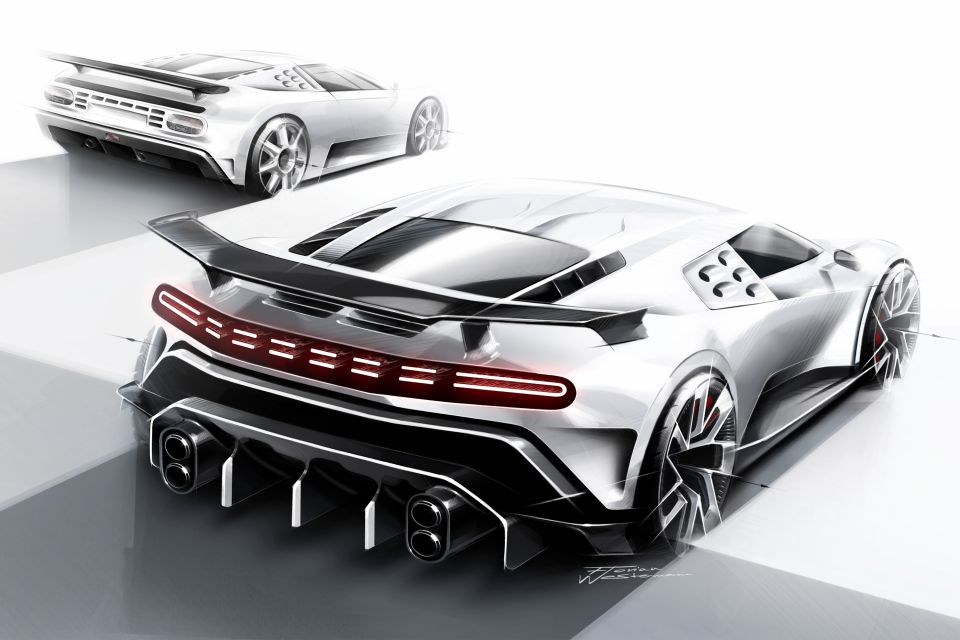
“My main job when we do a homage concept is not to get stuck in a retro direction, but to make translations that find a win-win situation for the technical development that is challenging,” said Achim Anscheidt, Bugatti director of design.
“Translating it and still creating a reminiscent that looks modern in terms of the car that we are quoting.”
All 10 units of the Bugatti Centodieci were sold before its official premiere, despite the steep price. The cars will be hand-built at the Bugatti Atelier in Molsheim, France, and delivered by the end of 2021.
So what are your thoughts on the Bugatti Centodieci? Was it a fitting homage for the almost iconic EB110? Let us know in the comments section below!
Where expert car reviews meet expert car buying – CarExpert gives you trusted advice, personalised service and real savings on your next new car.


William Stopford
6 Hours Ago


Max Davies
7 Hours Ago
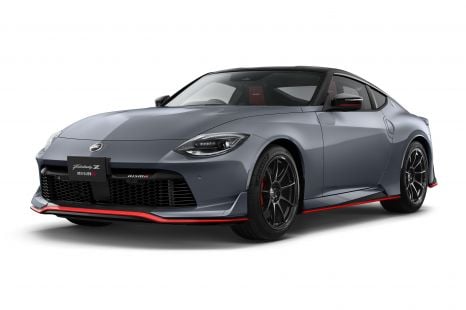

Derek Fung
8 Hours Ago
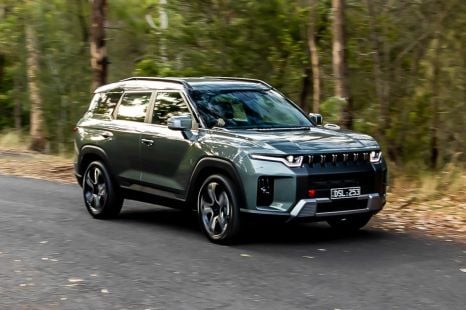

Matt Campbell
14 Hours Ago


Ben Zachariah
1 Day Ago


Damion Smy
1 Day Ago